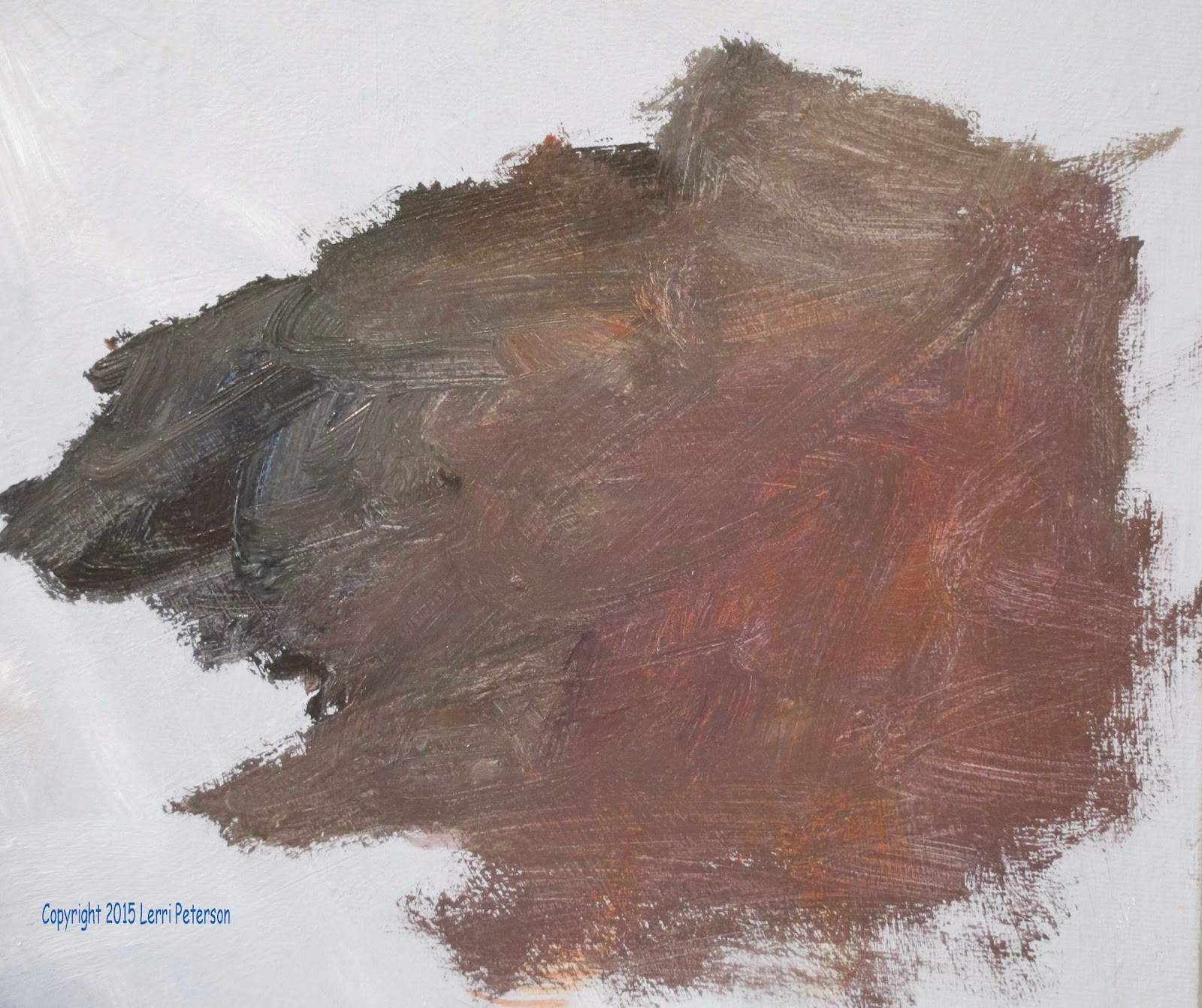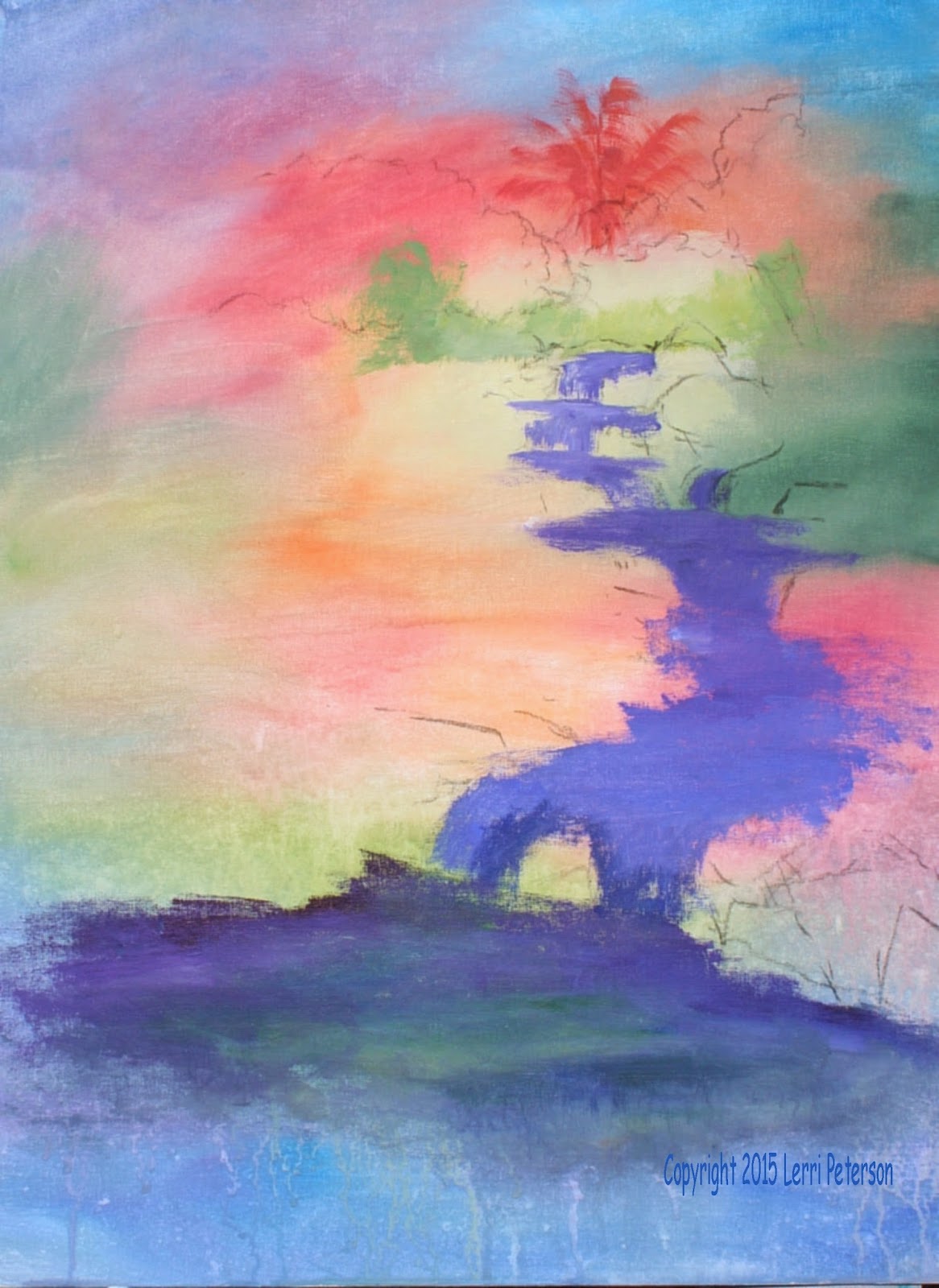Acrylics 101 Dry Brush Blending
Last week we went over
how to do brush blending or wet into wet blending, this week we covered dry
brush blending. Dry brush is probably the more useful technique when it comes
to blending acrylics you will use it all the time so it is important that you
practice and understand how to do it.
You want to use your
bristle brushes for most of the dry brush techniques though there are some that
you can use you sable brushes and not ruin them just remember that the key to
dry brush blending or any other dry brush technique is literally a dry brush. Of
course you will have to rinse your brush occasionally but when you do make sure
that you have your paper towels handy and you dry your brush completely, you
don't want any excess moisture in your brush.
The next thing you need
to remember is not to have a lot of paint on your brush. When you load your
brush with paint you want to lightly wipe off the excess from the outside of
the brush so that when you go to paint you will not have big gobs of paint
coming off your brush.
In the last thing you
need to remember is the pressure you apply to your brush when you're doing your
dry brush. If you press hard you will get more paint out of your brush if you
have very little pressure on your brush very little paint will come off your
brush and this is important, you want to be able to go from an almost solid
color to a color that barely covers the canvas underneath, if you are doing
this correctly you will see the canvas or the color underneath the new color
you put on (look close you should see the pattern of the canvas created with
the dry brush). Because acrylics dry so quickly knowing how to blend colors
with a dry brush is very important and can be used in many different ways and
techniques.
To practice your drybrush blending rinse you (bristle) brush and dry as completely as you can. Load
paint onto your brush then lightly wipe the outside for excess paint. On your canvas
start by pressing hard (I was using the narrow side of my brush) and try to go
from a solid color to a vague color just by decreasing the pressure you apply
to the brush. You should be able to see the canvas underneath when you get to
the lightest pressure. Remember that the brush is a tool and it can rotate in
your hand like a baton. My brush is constantly moving from the narrow side to
the wide flat side to the tip and back again depending on what look I am trying
to get or the spaces I am trying to get into.
If you are lightening your
pressure and you are still getting too much color or it looks very transparent
and/or runny you may still have too much water in your brush. The paint should
look very scratchy if you are applying it with the correct amount of water in
your brush. Dry your brush again and try it again you have to learn just how
much water you can use in the different situations.
Once you feel you
understand how to do the dry brush there are several things that you can
practice one is to shade the ball like we did last week starting with the dark
on the underside and then light pressure until you get to the top where it
should be light then you can try other techniques dry brush can be used for
wood grain it can be used to create hair and fur it can create a waterfall it
can create bushes and grass it can create fog and mist and dust it is a very
useful technique to learn.

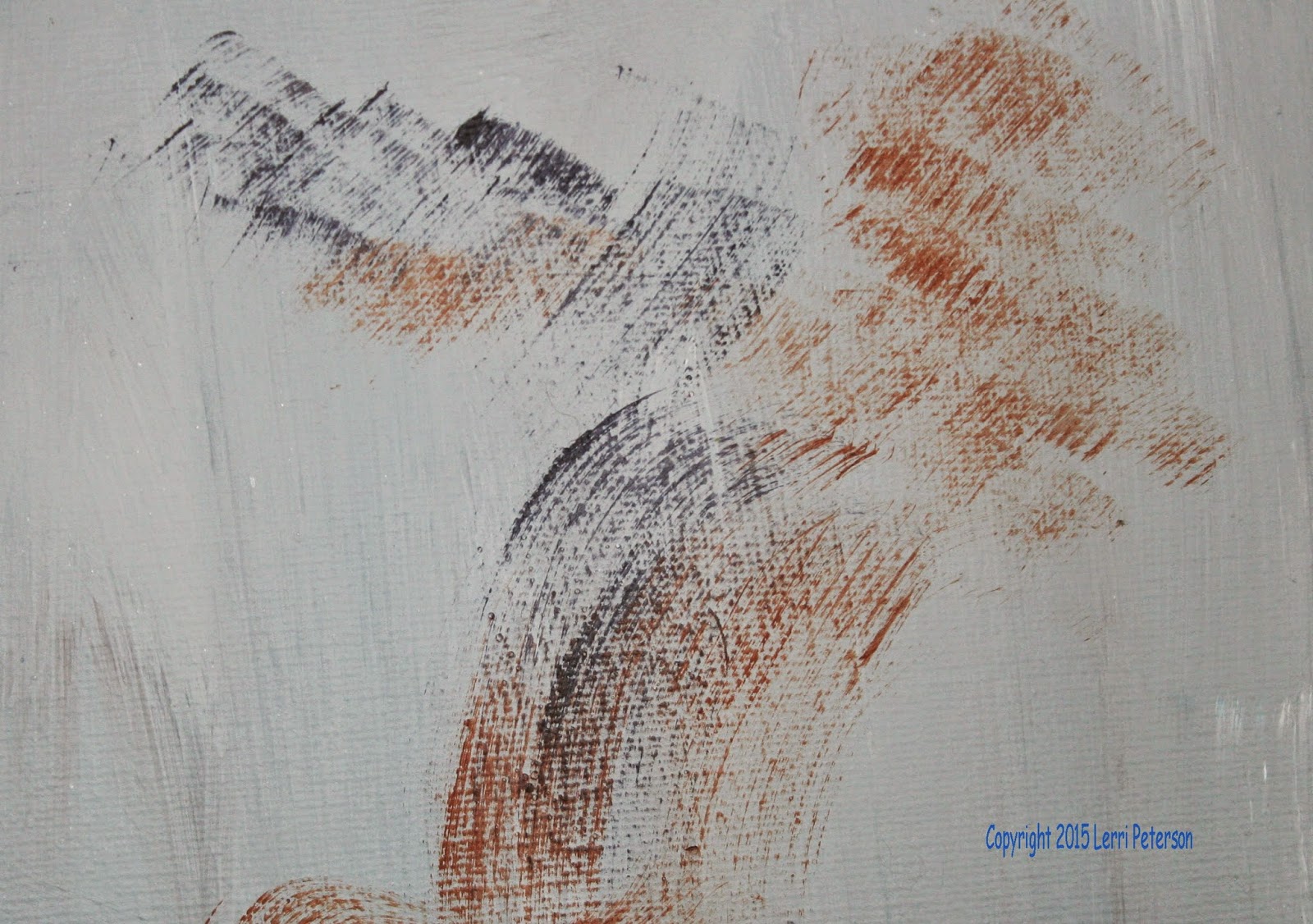 I ended the class by
demonstrating how I could under paint with the wet into wet technique, I let it
dry and then with the dry brush technique I created old wood. This is a fun
thing to do and when you have success at doing it you will know that you can do
anything! Keep painting and I will see you in class.
I ended the class by
demonstrating how I could under paint with the wet into wet technique, I let it
dry and then with the dry brush technique I created old wood. This is a fun
thing to do and when you have success at doing it you will know that you can do
anything! Keep painting and I will see you in class.
This week I wanted to
get as much of my background bushes and trees in before I painted my pagoda.
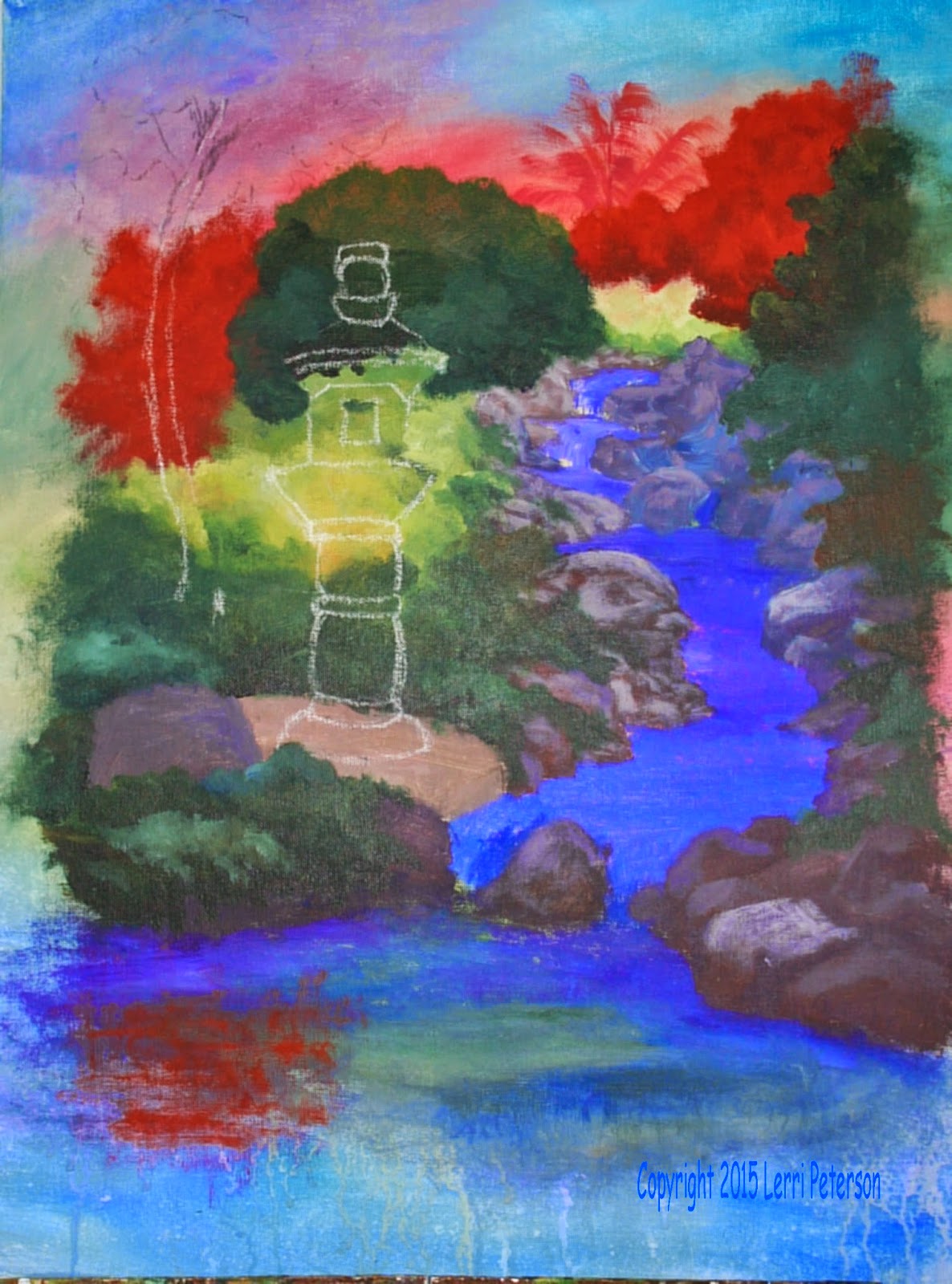 Have your reference photos of the pagoda and the stream from the Botanic Garden in front of you when
you are painting, this this will give you all the visual information you will
need if you just look to see where the different plants have their light and
shadow, also, you want to get as much dark behind the pagoda area as you can so
that when we put the pagoda in it will look very outstanding against the dark
background. There will be a few light areas behind the pagoda around the middle
of the pagoda and dark areas around the top and the bottom if you get carried
away one way or the other we can correct it once you get the pagoda sketched
in. You can always make corrections.
Have your reference photos of the pagoda and the stream from the Botanic Garden in front of you when
you are painting, this this will give you all the visual information you will
need if you just look to see where the different plants have their light and
shadow, also, you want to get as much dark behind the pagoda area as you can so
that when we put the pagoda in it will look very outstanding against the dark
background. There will be a few light areas behind the pagoda around the middle
of the pagoda and dark areas around the top and the bottom if you get carried
away one way or the other we can correct it once you get the pagoda sketched
in. You can always make corrections.
I under painted my trees
and my ground cover using my hooker’s green, a touch of blue and purple -
sometimes it was more to the blue side and other times it was more to the green
side - vary your colors it will make your painting more interesting. I also
used gesso (white) or yellow to change the value (light or dark) of my color. I
was working wet into wet and by adding lighter colors towards the top of a bush
or tree and darker colors to the bottom this starts the shading process.
When you are painting
the ground cover be sure that you get the ground cover in and around the rocks
some of the ground cover almost completely covers the rocks near the stream
this will make your stream look more natural and soften the edges of your rocks
so don't be afraid to go over some of your rocks to bring this ground cover over
it or behind it or in front of it this is why we put the rocks in first.
I also repeated a color
that I had in the background which was an orange red. It's not in the
photographs, however, because I put it in before, I wanted to repeat the color
so it is not a unique color and I will probably add it again someplace else in
my painting.
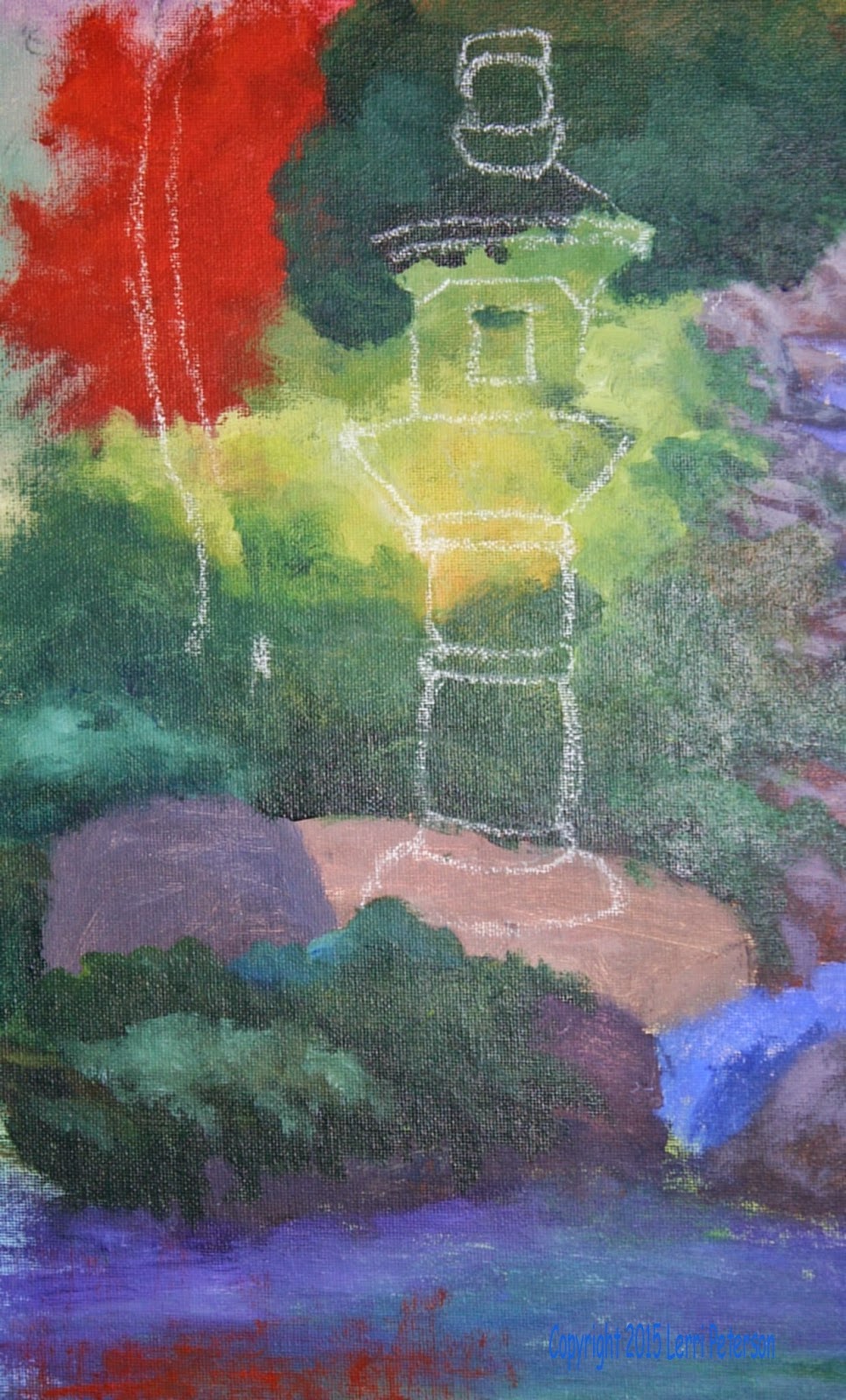 I did sketch in the pagoda and the trunk of the pine tree but I did not paint them in yet, I want
to see if there is any more background I can put in before under painting them.
I did sketch in the pagoda and the trunk of the pine tree but I did not paint them in yet, I want
to see if there is any more background I can put in before under painting them.
Try to get your painting
up to the same place as I have mine so that we can continue to work on this and
finish it within the next couple weeks we are getting down to the final stages
and we will be starting on details soon, also, have an extra canvas something
you can practice on because we will be doing some work with our liner brushes
and most of you need practice before working on your painting. Keep painting
and I will see you in class.







